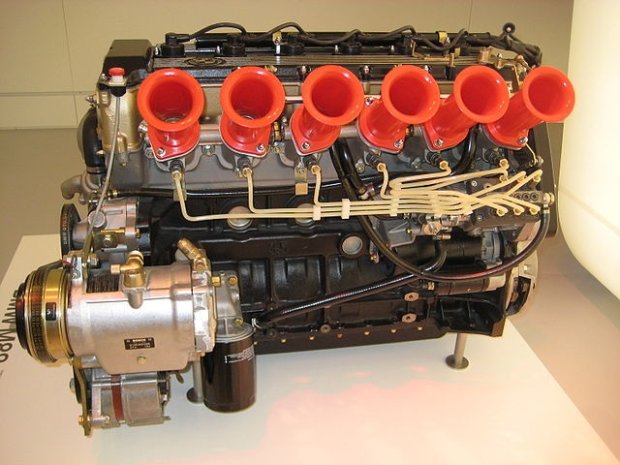A fuel injection system is a vital component of any modern vehicle. This system is responsible for delivering fuel to the engine in the right amount and at the right time.
These systems have changed over the years and were not always a standard component of cars. In this article, we will look at the history of fuel injection systems and how they work today.

What Came Before the Fuel Injector?
Before we began using fuel injectors, vehicles had carburetors. Carburetors work by mixing fuel with air and then delivering this mixture to the engine. The carburetor is controlled by a throttle that is opened and closed by the driver.
The position of the throttle determines the amount of fuel that mixes with the air. When the throttle is open, more air is allowed into the carburetor, creating a leaner mixture of fuel and air.
When the throttle is closed, less air flows into the carburetor.
The carburetor is a simple and reliable system but has a few drawbacks. One of these drawbacks is that the carburetor can only deliver a limited amount of fuel.
Due to these fuel limitations, carbureted vehicles can’t produce as much power as fuel-injected vehicles.
The Dawn of Fuel Infectors
Fuel injectors first came on the market in the 1950s, but they did not become a standard component of vehicles until the 1980s.
The first fuel injectors were mechanical and worked similarly to carburetors. These injectors had a plunger that was opened and closed by a camshaft.
When the plunger was opened, fuel was injected into the intake manifold. The amount of fuel that was injected was determined by the position of the throttle.
The main advantage of these mechanical injectors was that they delivered more fuel than carburetors. As a result, they are more powerful.
The main disadvantage of these mechanical injectors was that they were very complex and unreliable.
The Birth of Electronic Fuel Injectors
The first electronic fuel injectors became available in the 1970s. These injectors have similar functionality to mechanical injectors. However, now electronic sensors and actuators are responsible for control.
The main advantage of these electronic injectors was that they were much more reliable than mechanical injectors.
Contrarily, these electronic injectors were very complex and expensive compared to their predecessors. Luckily, there are professionals such as Thompson Diesel that specialize in this type of work.
How Fuel Injectors Work Today
The fuel injectors in modern vehicles are very different from the ones in the past.
Today’s injectors rely on a computer to adjust the amount of injected fuel. When you step on the gas pedal, the computer tells the injectors how much fuel to deliver. This electronically controlled valve can open and close very quickly, up to several times per second.
The computer assesses factors including engine speed, coolant temperature, and intake air temperature during the injection process. Such digital analyzation ensures that the engine receives the perfect mixture of fuel and air.
The coolant temperature sensor has to ensure that the engine is warm enough for the fuel to vaporize correctly. The intake air temperature sensor checks that the air is dense enough to provide the correct amount of power.
The oxygen sensor measures the amount of oxygen in the exhaust. All this information works to keep the engine running at the correct air-fuel ratio.
Performance Chips and Tuners
One of the most popular aftermarket modifications for modern vehicles is the performance chip or tuner. These devices plug into the vehicle’s computer and change how the computer controls the engine.
Performance chips and tuners can further increase the power of the engine, improve fuel economy, or change the way the engine runs. They can also disable certain safety features such as the traction control system.
Installing a performance chip or tuner is a relatively simple process that anyone with basic mechanical skills can do. It affects fuel injection by recalibrating the way fuel flows to the engine.
The Benefits of Fuel Injection
Fuel injection has several advantages over carburetion. The most important advantage is that fuel injectors are much more efficient than carburetors.
They help the car engine waste less fuel and produce fewer emissions. Since the injectors allow the engine to run at a higher temperature, it results in fewer emissions. Emission reduction is good for the environment and also helps to improve the fuel economy of the vehicle.
Fuel economy allows drivers to save money by using less fuel. With the cost of gas constantly in flux, a car with quality fuel injectors is good for the consumer budget.
The use of fuel injectors allows the engine to produce more power. They deliver more fuel than carburetors. Such power produces a higher top speed and faster acceleration than vehicles with carburetors.
Having the right fuel injectors comes in handy during certain seasons. It allows the engine to start quickly, even in cold weather. It also provides better throttle response and improved idle stability.
Install New or Repair Existing Fuel Injectors for Your Vehicle
In conclusion, fuel injectors are a much better option than carburetors. These systems work by injecting fuel directly into the engine. This process improves performance, reduces emissions, and provides better fuel economy. If you are looking for a way to improve your car’s performance, fuel injection is the way to go. And if you need repairs, consider getting rebuilt fuel injectors.

